Chrometics (Articulatory Mechanics)
Prismaphores rely entirely on the manipulation of light and color—or chromes—for communication. The production of chromes relies on a sophisticated system for heat generation and thermally-directed signaling, enabling precise modulation of its liquid crystal epidermis. These articulatory processes are internal and mechanical, mirroring how vocal cords, airflow, and mouths shape sound in spoken human languages—but here, the medium is heat and light.
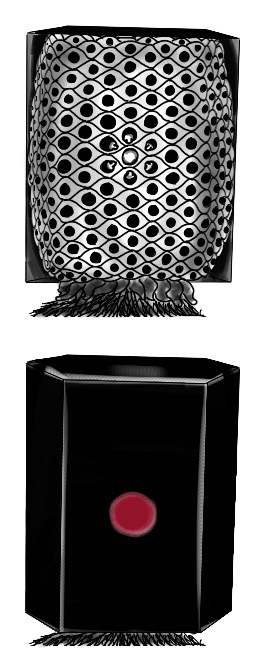
Bottom: Outer shell lined with liquid crystal.
At the center of the internal chamber of a prismaphore’s prism, a set of specialized thermal nodes function as biological heating elements. Each node consists of densely packed thermogenic cells, which produce heat through rapid mitochondrial uncoupling—a process analogous to brown fat thermogenesis in some Earth organisms. The nodes can produce tightly localized heat pulses with high temporal resolution, giving the organism the ability to create sharp, dynamic thermal gradients.
Surrounding the thermal core is a multi-layered photothermal diffusion lattice. This lattice is composed of bio-reflective membranes and selective insulators arranged in a repeating geometric grid. These membranes function in two key ways: channeling and shaping. In channeling, they guide heat outward toward the outer prism faces via micro-capillary heat pipes—organic conduits filled with heat-conductive fluid or gel. In shaping, they control the spatial distribution of heat through variable refractive surfaces, allowing the organism to “sculpt” heat fields, much like shaping airflow through the mouth when producing speech. Each cell in the lattice acts like a “chromic chamber,” targeting specific zones on the outer epidermis for thermal excitation.
The outer shell is lined with liquid crystal panels, each responsive to precise temperature ranges. When heat from the internal nodes reaches these panels via the lattice, they undergo thermochromic shifts, changing color in real time. The placement of heat on different sides of the prism allows for directional chrometic output, and the intensity, location, and duration of the thermal pulse determines the visual chrome displayed. Low-intensity thermal pulses emitted onto the prism shell result in longer wavelengths of light (e.g., red light), while high-intensity thermal pulses result in smaller wavelengths of light (e.g., violet light).

While the articulatory chrometics of the prismaphore allow for high temporal resolution—enabling rapid shifts in output—the system’s spatial resolution is markedly limited. As a result, prismaphores are incapable of rendering chromic shapes with sharply defined corners or discrete polygons. The shapes they produce are inherently round or elliptic.
Because chrometic output is mediated through heat, all color transitions must occur gradually, adhering to the thermodynamic constraints of the visible spectrum. Abrupt shifts from one hue to another are physiologically impossible; instead, all transitions must flow through intermediate wavelengths in sequence. For example, a shift from red to blue must pass through yellow and green in spectral order, following the physical behavior of thermochromic materials.
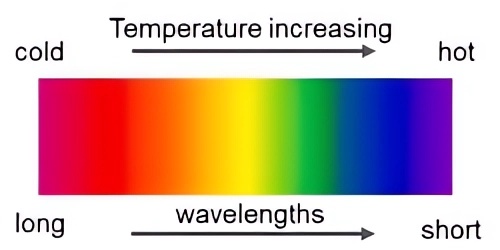
Additionally, due to the low spatial fidelity and the dissipative nature of heat, high-intensity chromes often produce a characteristic “bleeding” effect. Residual color may radiate a chrome, softening the edges of a signal and sometimes even leading to unintentional blending of chromes. These effects are especially pronounced with high-energy, short-wavelength colors such as violet and blue, which demand more precise control and significantly greater energy expenditure. Consequently, such chromes are considered “marked” forms—rare, effortful, and often associated with signs involving high transitivity, distance, 3rd/2nd person, etc.
Chromology
1 Colors
The most fundamental units of chrometic articulation are colors—visually perceived wavelengths of light. The table below details the basic colors of Prismatic and their approximate range of wavelengths. Each colors in the prismaphore’s system is associated with a corresponding symbol from the Human Phonetic Alphabet (HPA), a transcription system designed to render chrometic language in an articulatable form for human researchers. These human-assigned phonetic symbols serve as a consistent and convenient way to document Prismatic utterances, much like how IPA is used to transcribe diverse human languages.
| Color | Wavelength (nm) | HPA | |
 | Red | >625 | /i/ |
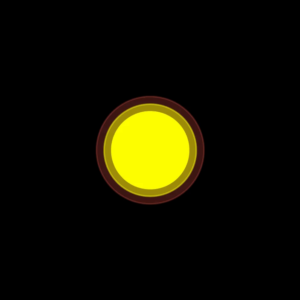 | Yellow | 580-610 | /e/ |
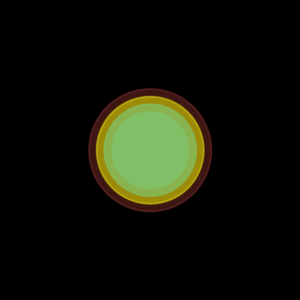 | Green | 545-575 | /a/ |
 | Blue | 500-520 | /o/ |
 | Violet | <490 | /u/ |
Prismatic generally distinguishes five basic colors: red, yellow, green, blue, and violet. In terms of function, colors behave similarly to vowels in human languages: it forms the chrometic core around which other elements—such as shape and size—manifest, essentially acting as the nucleus of a chrometic syllable. The production of color is controlled through thermal intensity: lower-energy pulses generate longer wavelengths (e.g., red), while higher-energy pulses produce shorter wavelengths (e.g., violet).

2 Shapes and Sizes
Within Prsimatic chromology, shape and size act as secondary articulatory parameters that modify or differentiate chromemes beyond their nucleic color. While the color represents the nucleus of a chromeme, shape and size form a kind of structural envelope, adding contrastive variation. These features are analogous to segmental features in spoken phonologies—particularly those associated with consonantal or articulatory configuration—but emerge from thermally sculpted spatial patterns. Due to the medium of heat-driven chrometic articulation, the visual geometry of chromemes is restricted to soft, rounded shapes. Corners, edges, and discrete angular figures are physiologically impossible for prismaphores to produce with precision. As such, the chromological shape inventory is limited to: circles, annuli, ellipses, and homoeoids. The table below details the basic shapes of Prismatic and their chromemic sizes. The HPA symbols underneath each chromeme correspond to onset consontants.
| SIZE | |||||
| Small | Medium | Large | |||
| SHAPE | Circle | 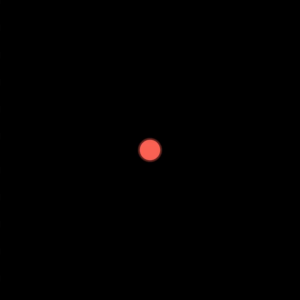 /d/ |  /t/ |  /l/ |
|
| Annulus | – |  /s/ |  /r/ |
||
| Ellipse | vertical |  /g/ |  /k/ | – | |
| horizontal | 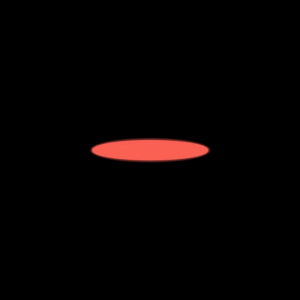 /b/ | 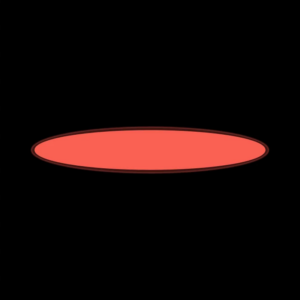 /p/ | – | ||
| Homoeoid | vertical | – | 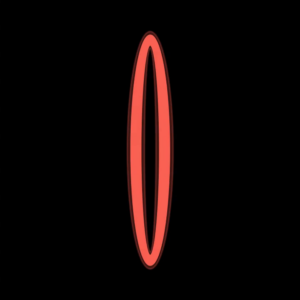 /x/ | – | |
| horizontal | – |  /f/ | – | ||
Size distinctions apply to circle, annular, and ellipse shapes, though not all sizes are available for all shape types. For instance, no small annuli or large ellipses have been observed, suggesting thermodynamic or structural constraints in chromeme formation. In addition to size, elliptical and homoeoid shapes show variation according to a third parameter, orientation, in which they can be oriented vertically or horizontally.
3 Place of Articulation
| Left | Center | Right | |
| Top | /-k/ | /-t/ | /-p/ |
| Mid | /-j/ | /-ʔ/ | /-w/ |
| Bottom | /-ŋ/ | /-n/ | /-m/ |
4 Shape Clusters
| Circle | Annulus | Ellipse | |||
| Small | Medium | ||||
| Double | vertical | ||||
| horizontal | |||||
| Triple | vertical | – | – | ||
| horizontal | – | – | |||
| Triangle | – | – | – | ||
| Nabla | – | – | – | ||
5 Global Transformations
6 Local Transformations
7 Embedding and Stacking
Examples of HPA Transcriptions

Translation: “The sky carries with it voices of light, but they do not belong to us.”
HPA: Skunut penet. Skunut tin, dla’ayaw.
Gloss: light(carried) sky(carries). light(arise.from) 1, NEG.
Translation: “The sky changes color as the moons rise.”
HPA: Dlu’tunut pon, pe’u.
Gloss: moons(rise.from) ground, sky(yellow-to-violet).
Translation: “Did you see the stone that fell on the ground?”
HPA: Toton pon. Tu, skîî’to.
Gloss: stone(fall.to) ground. 2, see-stone-Q.
